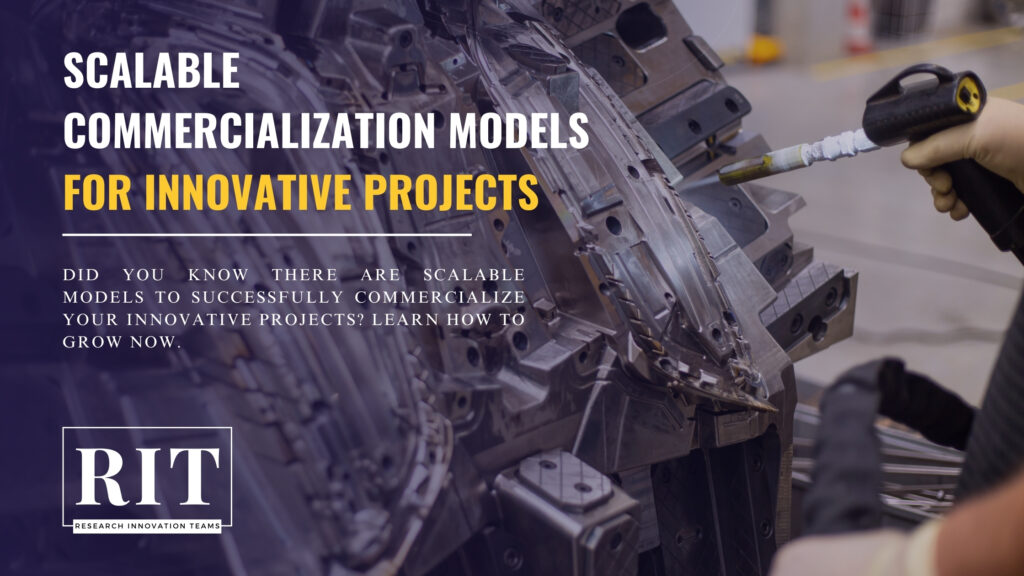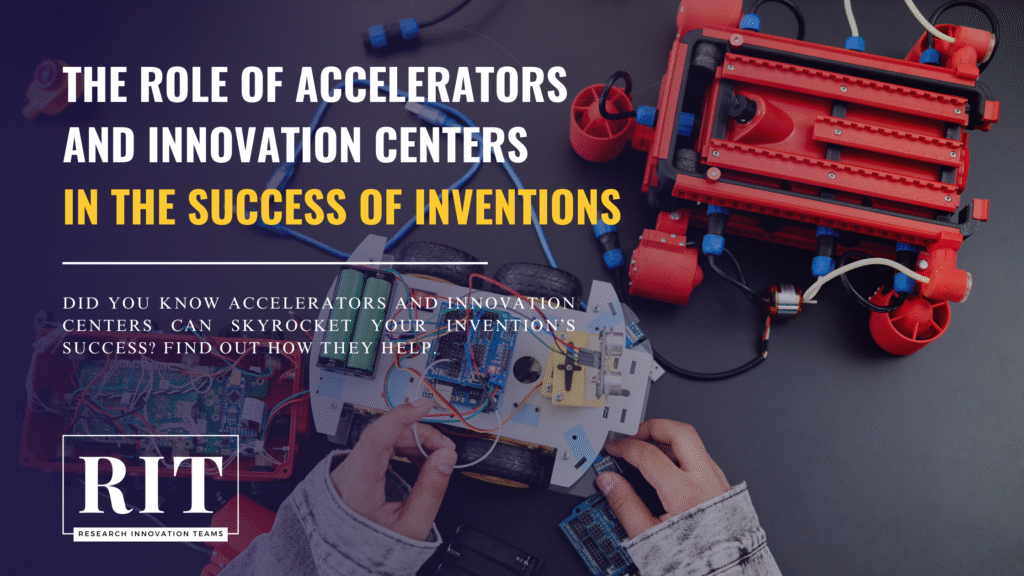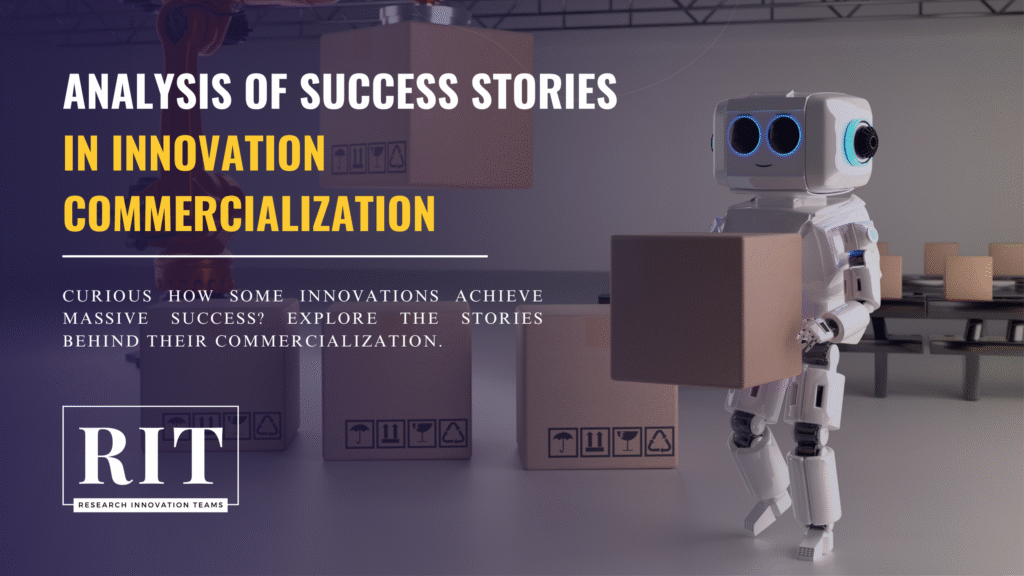In today’s world, technological advancements are evolving at an astonishing pace, and artificial intelligence tools play a key role in facilitating complex processes. One of the most significant applications of these tools, particularly in the field of intellectual property and patent registration, is Natural Language Processing (NLP).
Natural Language Processing, or NLP, is a branch of artificial intelligence that enables computers to understand, analyze, and interpret human language. This technology helps us examine complex texts more quickly and accurately, and extract relevant information. This is especially crucial in the field of patents, which often deal with long and technical documents.
On the other hand, one of the biggest challenges in the patent registration process is time management and error reduction. NLP tools, with features such as intelligent search, semantic analysis, and automatic text generation, can significantly simplify and accelerate the processes of patent search and drafting.
In this article, we aim to explore how NLP technology can optimize the steps of patent search and drafting, enhancing the quality and accuracy of these processes.
The Role of Search in the Patent Registration Process
Patent search is one of the critical and fundamental stages in the patent registration process. The goal of this stage is to identify patents similar or related to your idea, ensuring that your invention has not already been registered by someone else. This is where NLP tools come into play, making the search process faster and more accurate.
- Text Data Analysis
Patent databases contain millions of complex text documents. Using techniques such as Semantic Analysis and Topic Modeling, NLP tools can identify documents related to your idea. For example, NLP algorithms can automatically rank documents based on keywords or semantic similarities.
- Intelligent Search
Tools like Google Patents and Lens.org use NLP capabilities for advanced search. These tools allow users to get relevant results by entering simple descriptions or even natural language queries. Additionally, some of these tools utilize Information Retrieval techniques to find similar patents.
- Pattern Discovery
Another powerful capability of NLP is identifying repetitive patterns or recognizing prominent trends in patent documents. This feature can help uncover research areas or innovations that have not yet been fully explored. By analyzing massive amounts of text data and discovering hidden connections among patents, NLP tools enable you to identify new opportunities for patent registration and gain a competitive edge.
NLP Tools in Patent Drafting
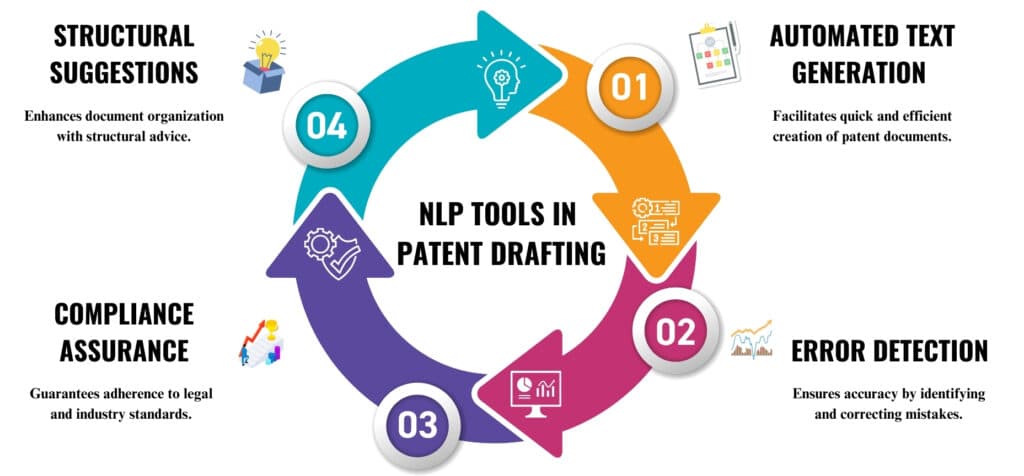
Patent drafting is one of the most challenging aspects of the patent registration process. It requires high accuracy, specialized language, and adherence to legal requirements. NLP tools, with their innovative solutions, can effectively address these challenges and help authors prepare high-quality and standardized documents.
- Automated Text Generation and Completion
One of the key features of NLP tools is the ability to generate various sections of a patent automatically. Advanced language models can automatically draft claims and technical descriptions, accelerating the drafting process. However, it is essential for legal experts to review the output to ensure accuracy and compliance with patent registration standards.
- Error Detection and Correction
NLP tools can identify and correct grammatical, linguistic, and structural errors in text. This feature is particularly valuable when authors are drafting patents in non-native languages, significantly improving the quality of the final document.
- Ensuring Compliance with Standards
By analyzing the text carefully and comparing it to international patent registration standards, NLP tools can ensure the completeness and comprehensiveness of the document. This capability helps authors to include all essential sections, such as the Background of the Invention, Detailed Description, and Claims.
- Providing Structural Suggestions
In addition to the above, NLP tools offer advanced analyses to suggest improvements in the structure and clarity of the text. These suggestions include optimizing the organization of sections, better utilization of technical terms, and enhancing text clarity. As a result, the patent drafting process becomes more efficient and accurate.
By using NLP tools, not only does patent drafting become easier, but the quality and effectiveness of these documents are also enhanced, increasing competitiveness in the innovation landscape
Examples of Practical NLP Tools
- PatentPal
PatentPal is a standout tool in the field of patent drafting and editing, leveraging NLP algorithms to facilitate this process. It is particularly useful for drafting claims, enabling users to input simple descriptions and receive accurate, legally compliant text. One major advantage of PatentPal is its ability to simplify the repetitive process of drafting claims, allowing for faster document reviews. Additionally, it can automatically provide suggestions to improve the text, which enhance the overall quality of the final documents.
- io
Specif.io is an innovative tool designed to optimize patent document drafting. This tool utilizes user inputs to generate various sections of a patent automatically. Specif.io analyzes user requirements and converts them into text compliant with legal standards. A unique feature of this tool is its ability to fine-tune the output based on the user’s writing style, resulting in highly customized and professional documents. Furthermore, Specif.io provides feedback on the clarity and precision of the text to improve the quality of the document.
- LexisNexis PatentSight
LexisNexis PatentSight is a powerful tool for patent searching that uses advanced NLP techniques. It is especially useful for analyzing global patent trends and identifying strengths and weaknesses in various innovation fields. This tool provides comprehensive access to existing patents, enabling users to develop effective strategies for filing new patents by analyzing historical and current data. PatentSight also helps companies strengthen their competitive advantage by identifying underdeveloped areas in innovation.
- OpenAI Codex
OpenAI Codex, widely known for its programming capabilities, also performs remarkably well in drafting and analyzing patent texts. This tool helps generate complex technical texts quickly, allowing users to input simple descriptions and receive professional outputs. Codex is also highly effective at translating technical concepts into simpler language or vice versa, a feature that is especially valuable in drafting multilingual patents. Moreover, its ability to analyze document structure and content enables users to identify and correct incomplete or incorrect sections quickly.
Challenges and Limitations
While NLP tools offer numerous advantages and simplify complex processes, they also come with certain limitations that should not be overlooked:
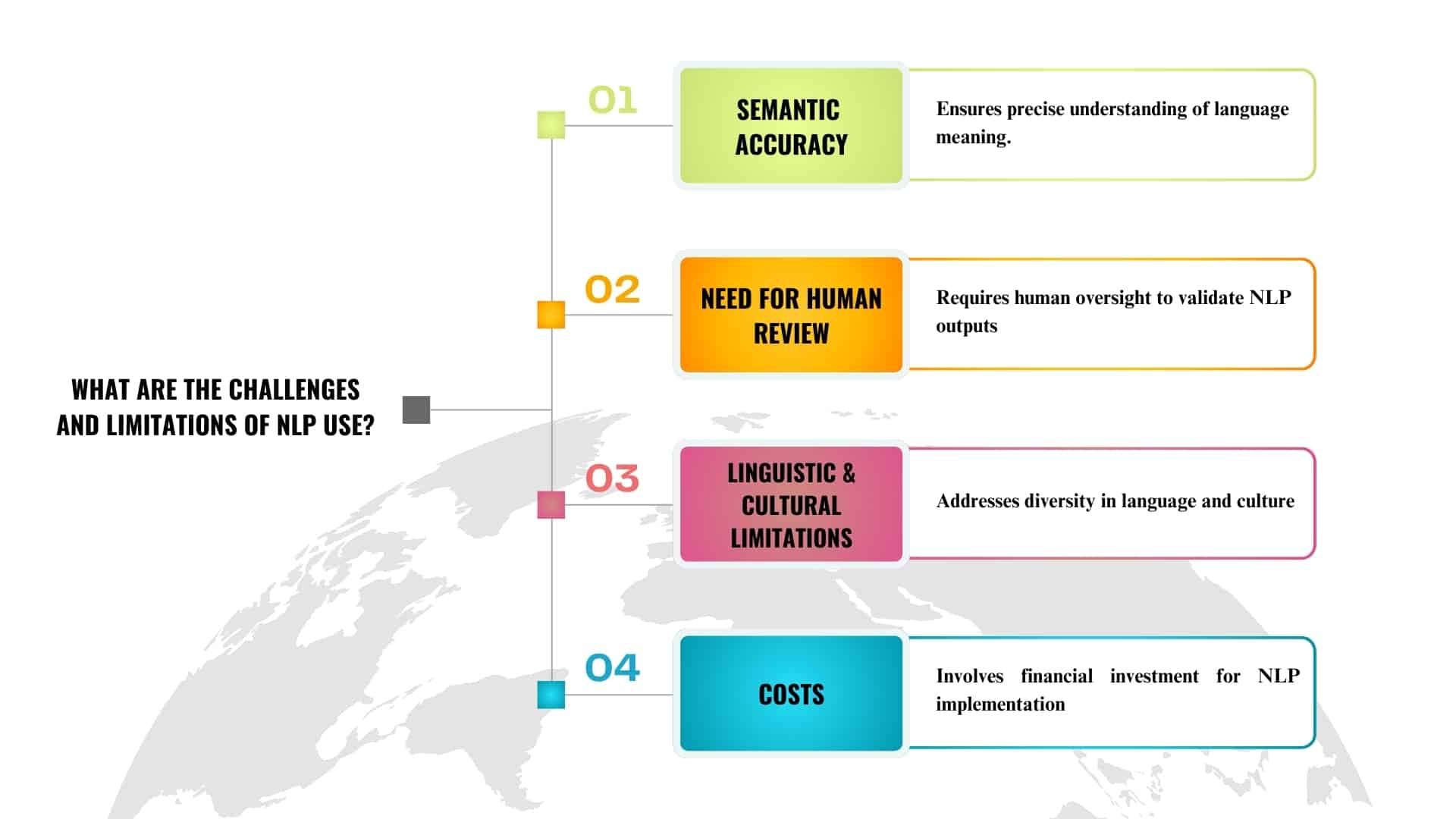
- Semantic Accuracy: One of the fundamental challenges in using NLP tools is their limited accuracy in understanding highly technical or legal texts. These tools may struggle with analyzing concepts that require specialized knowledge. For example, in legal or scientific documents containing complex terminology, there is a risk of generating incorrect results.
- Need for Human Review: Although NLP tools can accelerate drafting and search processes, the output is not always flawless and complete. To ensure compliance with legal standards and maintain content accuracy, experts must review and correct the generated results. Therefore, human presence in this process remains essential.
- Costs: Using advanced NLP tools can be expensive, particularly for companies or individuals with limited budgets. These tools often require powerful computational resources and costly subscriptions, which may restrict access for all users. This challenge is especially important for startups and independent inventors looking to reduce their costs.
- Linguistic and Cultural Limitations: Many NLP tools face challenges when analyzing and processing non-English languages or languages with complex structures. This can be a serious obstacle for individuals drafting patents in other languages. Additionally, cultural differences and local terminology may not be properly understood during processing.
Given these challenges, the use of NLP tools should be accompanied by an awareness of their limitations. Human supervision and careful review should always complement these tools to ensure accurate and reliable outcomes.
The Future of NLP Tools in Patent Registration
Rapid advancements in technology and increased computational power have allowed NLP tools to achieve greater accuracy and efficiency over time. Currently, deep learning models have the capability to provide more sophisticated analyses. These models can discover hidden patterns and connections within data, enabling more precise patent search and drafting processes. For instance, advanced models are expected to better understand technical and legal texts, offering more targeted suggestions.
It is also expected that NLP tools will gradually integrate with larger databases and broader informational resources. This integration can help users access more comprehensive and accurate information. Additionally, large-scale data analysis will enable the identification of innovative trends and new research areas, potentially leading to the registration of more practical and impactful patents.
Ultimately, with technological progress, NLP tools are likely to move toward full automation in patent search and drafting. This automation could minimize the need for human review, reducing both the time and cost associated with these processes. At the same time, these tools could serve as an intelligent assistant to inventors and legal professionals through continuous learning and adaptation to changes in laws and regulations.
Conclusion
NLP tools, as one of the advanced technologies in artificial intelligence, provide numerous opportunities to enhance the patent search and drafting process. These tools, with their ability to quickly and accurately process text data, have significantly reduced challenges such as the high volume of information and the complexity of technical texts. Additionally, using NLP tools can save time and reduce costs associated with patent registration.
One of the most important advantages of NLP tools is increasing the accuracy and quality of patent documents. These tools can identify linguistic and technical errors and provide suggestions to enhance the structure and content of documents. This allows patent authors to create documents that meet legal and technical standards, increasing the likelihood of success in the patent review and registration process.
However, utilizing these tools requires sufficient knowledge of artificial intelligence and collaboration with legal experts. The outputs of these tools still need human supervision to ensure accuracy and compliance with legal requirements. Using such technologies without expert guidance can result in documents that fail to meet necessary standards.
In conclusion, if you are looking for innovative solutions to improve and facilitate the patent registration process, NLP tools can be highly practical and effective. These tools not only increase the speed and accuracy of the process, but also give you a competitive edge in the global intellectual property competition.
“Even if we do not talk about 5G (specifically), the security talent in general in the country is very sparse at the moment. We need to get more (security) professionals in the system”
“This article was generated with the assistance of AI and edited by our team to ensure accuracy and quality.”

